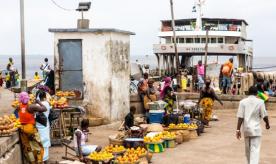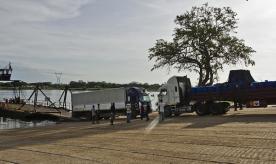How regional trade can contribute to the development of East Africa's border areas
In East Africa as well as other regions of the world, border regions tend to be less economically developed than interior ones. Night lights captured by satellites are on average 35% less intense at land borders than 200 km inland. Such “border shadows” are both a cause and a consequence of national boundaries. Country borders typically run through naturally inhospitable regions such as mountain ranges; but borders themselves, by segmenting markets, act as impediments to regional economic development. Unequal spatial development, in particular to the detriment of ethnic groups located close to borders or straddling them, can generate resentment among local populations, often rooted in colonial history and ethnic tensions (see e.g. Michalopoulos and Papaioannou, 2013). Lack of development is then not just an economic problem but a political one as well, with developing-country border areas prone to unrest and armed conflict (e.g. in Uganda and the DRC).
This project explored how the facilitation of cross-country overland trade (through regional integration) can help contribute to the development of border areas. The objective of this research was to provide a fresh look at the gains from trade by highlighting how improved trade facilitation may contribute to achieving balanced development across regions, i.e. larger income gains in backwards regions. This may help alleviate fears that more exposure to globalisation will benefit essentially urban elites and foster more agglomeration of activity in large urban centres. By focusing on inland trade, we also hope to contribute to a better understanding of the gains from negotiated improvements in trade facilitation between neighbouring countries as part of regional agreements (EAC and COMESA).
Using annual night-light data for 1995-2010 for a large number of countries and measuring night-light intensity along all major cross-border road corridors in the world, we identified an average border-shadow effect whereby light intensity progressively decreases as one gets closer to the border. The effect will be identified “within-highway”, i.e. with highway fixed effects, with geographical controls (altitude, population density, and presence of ports and airports).
Beyond the identification of the border-shadow effect, the experiment consisted of testing whether trade between the two countries straddling a land border weakens the border-shadow effect. As overland trade expands, the development of economic activity could take the form of trade-related services such as roadside accommodation and amenities for truckers; alternatively and perhaps more interestingly, it could also take the form of trade-enabled productive activities (e.g. the development of export crops). We hope to be able to disentangle these two hypotheses by looking specifically at trade in crops that are grown in border areas.







